This is an image of Saturn.
Click on image for full size
NASA/JPL
An Overview of Saturn's Atmosphere
The dramatic appearance of Saturn stems mainly from the spectacular rings. What is visible of the atmosphere is much less dramatic. The clouds of Saturn are much less colorful than those of Jupiter. This is because the composition of Saturn's atmosphere includes more sulfur. This adds to Saturn's overall yellow appearance. When you look closely, however, Saturn's atmosphere is just as fierce as that of Jupiter.
The atmosphere of Saturn, like Jupiter, is only a narrow surface layer, compared to the vast interior of Saturn. The three clouddecks of Saturn are to be found mostly low in the troposphere, while hazes of smog can be found higher in the atmosphere.
Saturn is not much changed from its early evolution out of the primordial solar nebula, and in fact, may still be evolving.
Motions in the cloud patterns indicate that, like Jupiter, the basic meteorology of Saturn can be described as a striped pattern of winds.
You might also be interested in:
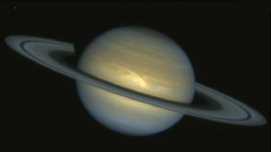
The most important motions in the atmosphere are winds. The major winds in Saturn's atmosphere are the zonal winds which are composed of alternating belts and zones flowing in opposite directions. Belts
...more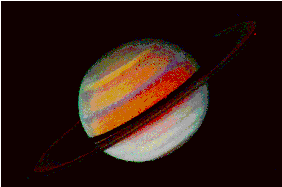
The striped cloud bands on Saturn, like Jupiter, are divided into belts and zones. In a belt, the wind flows very strongly in one direction only. In a zone, the wind flows very strongly in exactly the
...more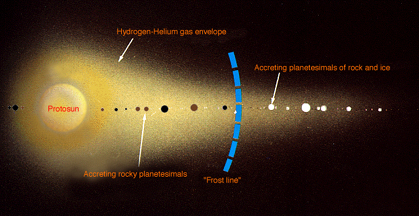
The position of the planets in the solar nebula greatly affected their 1. size and 2. composition. This is because of the effect of how cold it was in the nebula. 1. The nebula was a lot warmer close to
...more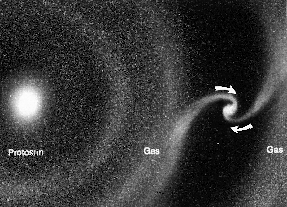
As shown in this picture, while they were forming in the solar nebula, the nucleii of the planets-to-be (called protoplanets) drew material to themselves from the cloud of gas and dust around them. The
...more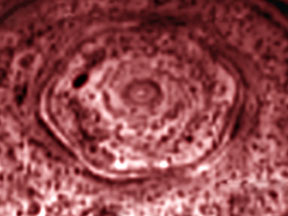
Astronomers have discovered a bizarre, hexagon-shaped feature in the clouds of Saturn near the planet's North Pole. The feature was first seen in images returned by the Voyager spacecraft in the 1980s,
...more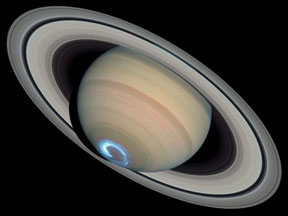
Have you ever seen the Southern or Northern Lights? Did you know that Earth isn't the only planet that puts on these beautiful light shows, also known as the "aurora"? Auroral displays have also been observed
...more
There's a lot of strange and interesting stuff going on at both the North and South Poles of Saturn. Features at the poles of two of Saturn's moons, Titan and Enceladus, have also grabbed the attention
...more














